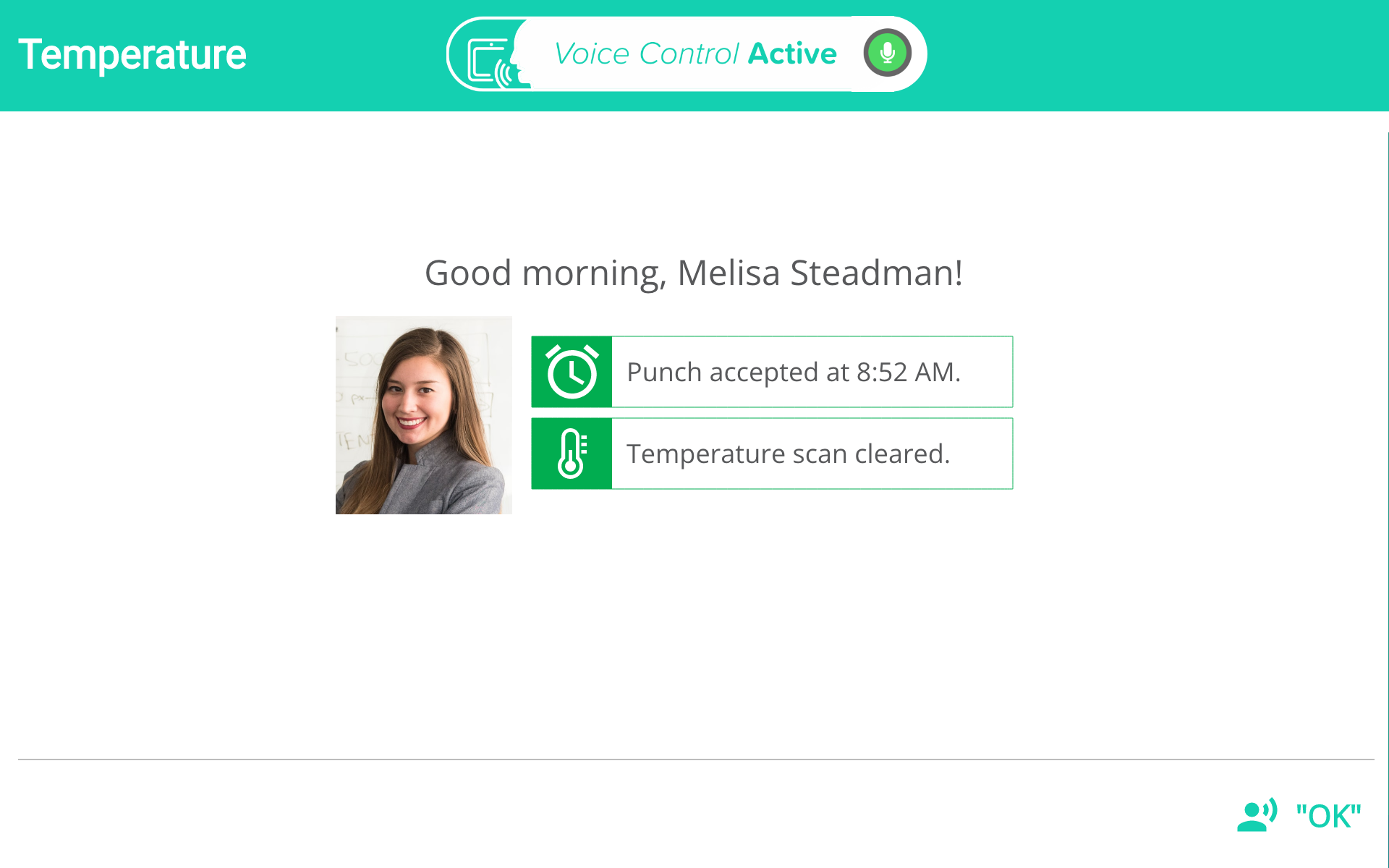CarePoint Timeclocks (Ascentis)
Role: UI/UX Designer, Visual Designer, UX Researcher Timeline: 2020-2021 Tools: UXPin, Sketch, Trello, JIRA, Teams
Overview: I designed user interfaces for physical timeclock machines during 2020. As a reaction to the onset of the covid pandemic this project exclusively used voice controls, thermal scanning, and facial recognition to provide a touch-free experience for our users. Features included allowing employees to clock in-and-out of work, allowing entry to guests, and allowing group scans of entire shifts.
How I worked: As the head designer for this project my tool of choice was UXPin. It allowed me to create and share functional prototypes that helped convey our design vision to everyone involved. It was imperative that we moved quickly to respond to the needs of our users during this time. The collaborative tools such as its commenting system and live editing capabilities allowed me to work at a record-breaking pace.
The early months of the pandemic came with much uncertainty and our design demands changed often as our understanding took shape. Constant communication with product and engineering, along with holding regular check-ins with our users, contributed to our success. It allowed me to make iterative changes that best served our users as everyone’s knowledge grew in real-time. I learned early from our users how important a terse check-in process was and I allowed it to drive the minimalist simplicity of the interface wherever possible to avoid creating any hold-ups during the process.
In the end we were able to create and ship many units to our clients and the project was seen as a success. I was proud that my designs could help bring safety and peace of mind to our users. Likewise I was excited to learn that my work on this project was featured in an article written by Forbes.
Shift Scheduler (Ascentis)
Role: UI/UX Designer, Visual Designer, UX Researcher Timeline: 2021-2022 Tools: UXPin, Sketch, Trello, JIRA, Teams
Overview: I was tasked with designing a best-in-market scheduling solution for Ascentis during 2022. This was an effort to modernize the powerful but dated scheduling products Ascentis offered to its clients. This product allowed a user to create one-time or recurring shifts, set the needed roles for the shifts, assign employees to those shifts, and manage all of their shifts at a high level with an emphasis on bringing problems such as short staffing to the forefront of the user’s attention.
How I worked: As the head UX designer for the project it was my goal to make managing shifts as user-friendly as possible. Before the project started, we were able to gather valuable insights through user research and surveys. This research allowed me to re-think how we considered fulfilling shifts with a needs-based approach, pushing vital information to the forefront of the design using a feed. I was able to conduct usability studies regularly with our clients to gather their feedback to help shape the design and ensure we were meeting user expectations.
As the head visual designer, it was my main objective to keep things looking clean and modern to distinguish from our other dated offerings. I engaged in competitor analysis to review what modern approaches and styles were working for other companies. It was also important to me that we had a strict use of meaningful colors to draw the eye to areas that needed attention since our existing products held strong pain points when showing a user what did or did not need their attention. Ascentis had recently undergone a complete rebranding and so I ensured that we adhered to the new brand guidelines.
Near the end of the project Ascentis was acquired by Ultimate Kronos Group (UKG), however our research indicated a high level of excitement for the release of this product, and our ongoing usability sessions found the new designs to be exceeding the expectations of our users.











